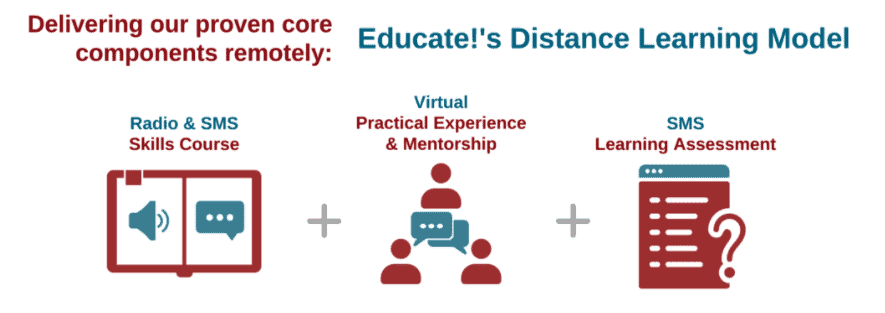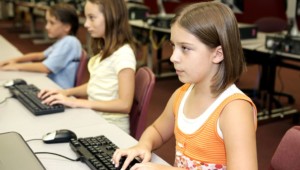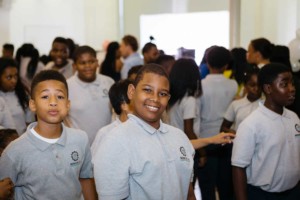What’s Working During COVID

By: Norton Gusky
While many people have been concerned about the lack of learning during the COVID period, there have been a number of successful strategies and approaches. Through a dialog with regional educators, my contributions to the work for the Consortium of Schools Networked (CoSN), and listening to personal stories from 2020 HundrED Virtual Innovation Summit, I’ve compiled a list of successes. In this posting, I’ll share some of the ideas I’ve discovered. We’ll look at how at one school in Pennsylvania has students working together in teams and collaborating even with remote learning and social distancing. We’ll hear from an online trainer how the pandemic has opened new learning doors for active learning for students, parents, and educators. We’ll hear from one edtech company that has made robotics a remote hands-on experience for all learners. We’ll discover a school district in California that has found ways to continue to expand the expertise for their professional learning community. Finally, we’ll discover how an African non-profit has had to pivot to continue to deliver its entrepreneurial program for learners.
Collaboration and Working as a Team
Melissa Unger, the K-2 STEAM Teacher for the South Fayette School District, has been an educational leader for the past decade. The pandemic forced her to rethink how she designs learning experiences, especially to promote collaboration and team-building. According to Melissa, “Being in a hybrid setting and social distancing has caused us to rethink what it means for students to work together and collaborate. One of the best tools I have used for this is FlipGrid—students are able to share their work, thoughts, or ideas via short videos, and others can comment. In each homeroom, students have only met half of their classmates in person this year, so FlipGrid has allowed for a greater sense of community building and information sharing. I have watched students use others’ videos as a way to add on to their own ideas and form connections.
“I also think that now more than ever open-ended projects and STEAM tasks are really important for our students. These projects and tasks address an uncertainty that students need to understand—an uncertainty about the virus, school closures, and just what’s going to happen each day. With open-ended projects, I think students start to see that having all the information is not always necessary before moving forward. This new learning situation builds confidence and resilience during this time of uncertainty.”

Active Learning
Active learning is always an important goal. In order to achieve learning engagement, it’s critical to think about instruction design. According to Kelsey Derringer, the Co-Founder of CodeJoy LLC, ” The job of an educator is not to simply transmit information, but to design educational experiences. Even in online learning, this is still the job, though our delivery method has radically changed. In our classes at CodeJoy, we continue to ask, “What are the students DOING?” We offer opportunities to do more than listen—students can code and control robots, build their own catapults at home with craft supplies, engage in the Engineering Design Process together, talk to a live puppet, ask a florist to cut a rose in half to see what it looks like, strap a phone camera to a horse and go for a ride, or have a dance party with children all over the world! Engagement looks different online, but it should still be the cornerstone around which educators design their learning experiences.”

Lock downs and social distancing requirements have created serious challenges to hands-on robotics education, but also inspired creative solutions, such as 1:1 robotics and remote robots. According to Tom Lauwers, the CEO and Founder of Birdbrain Technologies, “With 1:1 robotics, all students have a robotics kit at home, and use remote collaboration tools like the newly released micro:bit classroom along with teacher-led video instruction to learn coding and robotics. Remote Robots is a new technology that we’ve developed to allow kids to code a robot in a beginner-friendly environment that is not located in the same location as them. We quickly created five 24/7 live-streamed robots in April that anyone can code, and have also created a tutorial for educators to set up their own remote robots. Together, 1:1 robotics and remote robots provide educators with a toolbox to continue physical computing and robotics education in these pandemic times.”
Creating a Professional Community
For the past three years, CoSN has assembled a global team of advisors to look at Innovation in Education. I’ve been part of the CoSN Driving K-12 Innovation advisory team. This year in addition to the normal Hurdles, Accelerators, and Tech Enablers, we began to look at examples of innovation due to the COVID situation. Phillip Neufield, the Executive Officer for the Fresno Unified School District in California shared his insights with the CoSN community. According to Phillip, “Over the past five years, our district has moved to more experiential, actionable professional learning where teachers experiencing their learning as we intend teacher practices to land as learning experiences for their students (albeit with adult learning wisdom applied).”
“So in spring we delivered over 100 webinars to prepare teachers for the shift to distance learning with over 1,700 educators participating, some up to 3-5 times in different webinars. Educators could access recorded sessions. And we offered competency-based, on-demand web training resources with over 10,000 unique visits.”
“We repeated this approach in summer to prepare educators for fall. We found educators were bringing these new teaching practices back to their grade-level or department-level professional learning communities (teaching practices included the know-why, know-how, and tech mediated activities).”
Creative Pivoting
The problems learners, parents, and educators face in the United States due to the pandemic are truly global. During the Virtual HundrED Innovation 2020 Summit I listened to an African educator, Frank Omana, outline how his non-profit, EDUCATE!, pivoted.
Educate! tackles youth unemployment by partnering with youth, schools, and governments to design and deliver education solutions that equip young people in Africa with the skills to attain further education, overcome gender inequities, start businesses, get jobs, and drive development in their communities. With the appearance of COVID this skill-based model for entrepreneurial studies had to find a distance learning option

Frank and his team created “The Experience on Air.” They began to broadcast on national radio and via text messaging. They kept the core components—practical experience with mentorships, skills, and assessments. Remarkably the pivot opened new doors for the African learners using the distance learning model.
In each of the cases I’ve outlined new doors opened, while old gateways were no longer available. In today’s world, that’s the lesson we all need to understand. We need to be nimble and pivot so we can maintain our educational goals like Birdbrain, CodeJoy, Frenso, or the South Fayette School District. The real test is how well we meet the needs of our learning community.
For more, see:
- Five Principles to Help Provide Our School Communities With the Communications They Deserve
- Always Ready For Learning: Meeting the Rapidly Evolving Needs of Educators Throughout COVID-19
- An Opportunity to Disrupt Education for the Better: Lessons From Starting a School in a Pandemic
Norton Gusky is an educational technology broker and uses technology to empower kids, educators and communities. You can find him on Twitter at @ngusky.
This article is a repost and originally appeared on Norton’s blog.
Stay in-the-know with innovations in learning by signing up for the weekly Smart Update.







0 Comments
Leave a Comment
Your email address will not be published. All fields are required.